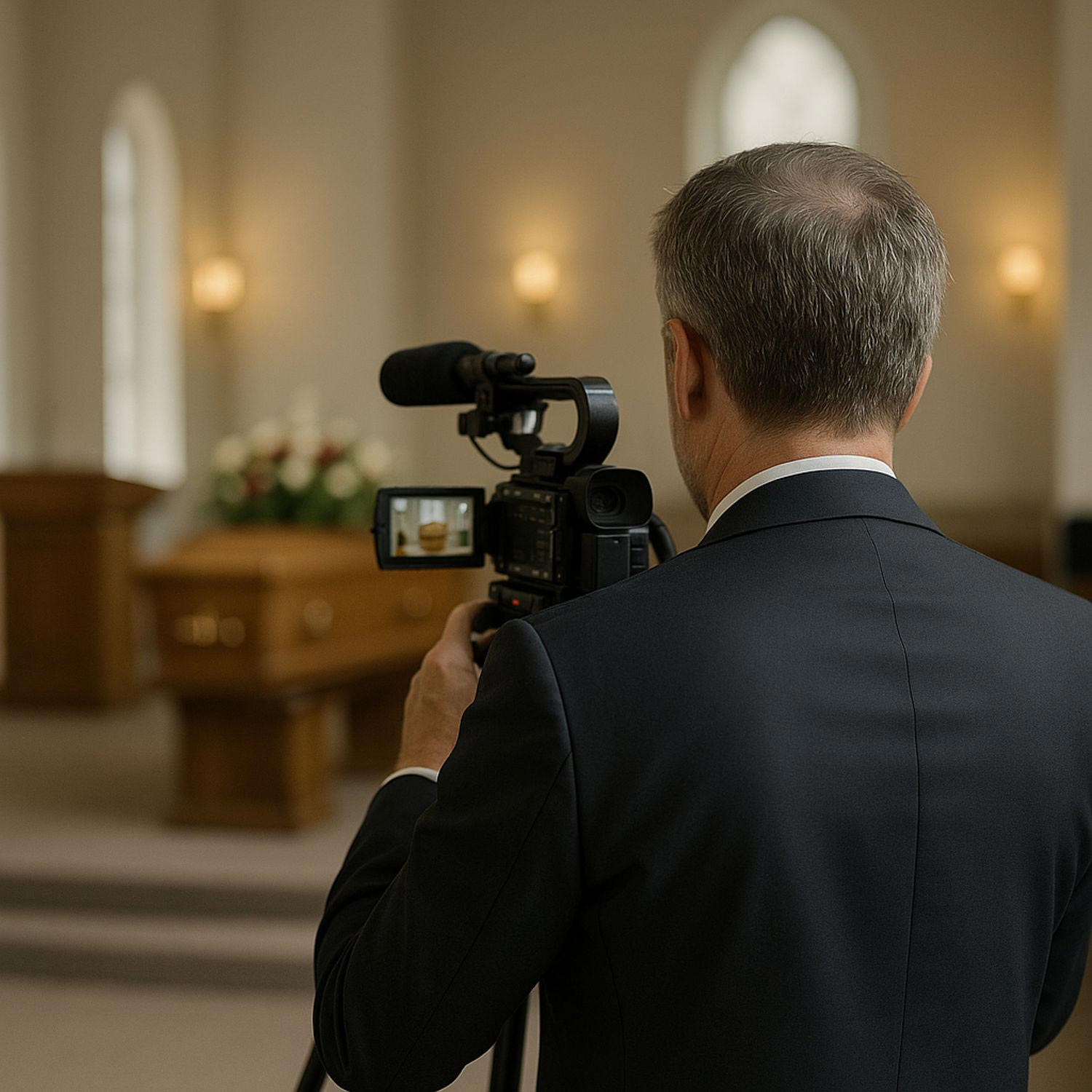Live-streaming has quietly but profoundly reshaped how we grieve, remember, and honour those we’ve lost. Before the COVID-19 pandemic, the idea of watching a funeral remotely was rarely discussed—let alone widely accepted. It was often perceived as impersonal, even disrespectful. But in the wake of global lockdowns and travel restrictions, something changed: live-streaming became not just accepted, but expected.
Today, the role that live-streaming plays in funerals has evolved from necessity to deeply valued service—one that brings families together when physical presence isn’t possible and offers a sense of inclusion and connection during life’s most difficult moments.

A Global Shift in Mourning Culture
In 2020, the live-streaming industry saw a staggering 99% increase in usage across sectors, with the global live video streaming market projected to grow from USD 70 billion in 2021 to over USD 250 billion by 2030 (Source: Market Research Future). In the funeral industry specifically, the shift was abrupt and widespread. Almost overnight, funeral homes that had never considered live-streaming were installing cameras or partnering with video professionals just to meet demand.
Scott Gorman, founder of Funeralcast, reflects on this pivotal moment: “In the early days of the pandemic, people were just relieved to hear that such a thing existed. They were grateful—sometimes in tears—just knowing their family overseas or interstate could be part of the service. That emotional reaction told us everything we needed to know about the role this service plays.”
From Contingency to Expectation
What began as a workaround during COVID has now become a standard part of modern funeral planning. Funeral arrangers—once reluctant to suggest digital options—are now expected to offer live-streaming as a baseline service. The demand is no longer reactive. It’s proactive.
According to a 2022 survey by NFDA (National Funeral Directors Association, USA), 58% of funeral directors said families now request live-streaming without prompting. While this data is U.S.-centric, the trend holds true in Australia and the UK, where modern funeral planning increasingly involves digital inclusion as part of a compassionate service experience.
New Forms of Togetherness
Live-streaming has also redefined what “being there” means. Grieving groups have formed in living rooms, community halls, and aged care centres, where mourners gather to support each other while watching a live feed. These shared experiences foster connection, reflection, and healing—across borders, time zones, and generations.
Statistics have shown that families often replay the service hours later in another location, replaying the eulogy for someone who missed it due to work, illness, or emotional fatigue. In essence, live-streaming extends the reach of the farewell and gives people space to grieve in their own way.
Supporting Complex Family Needs
The role of live-streaming has become especially critical for multicultural families. In many cases, parents or siblings reside overseas and cannot travel quickly, especially in regions with visa or mobility challenges. In these situations, live-streaming is not a substitute—it’s the only way someone can say goodbye.
A Permanent Cultural Shift
While restrictions may have eased, the expectations formed during the pandemic remain. Just as hybrid work and telehealth have redefined work and care, live-streaming has redefined modern memorials. It’s no longer seen as a technical trick—it’s now a compassionate tool for inclusion and healing.
As the funeral industry evolves, so too must its services. Live-streaming has moved from the margins to the mainstream, earning its place not because of novelty or necessity, but because of the comfort and dignity it provides.
Originally published by FuneralCast
This article was written by the team at FuneralCast, specialists in funeral live streaming services across Australia.

